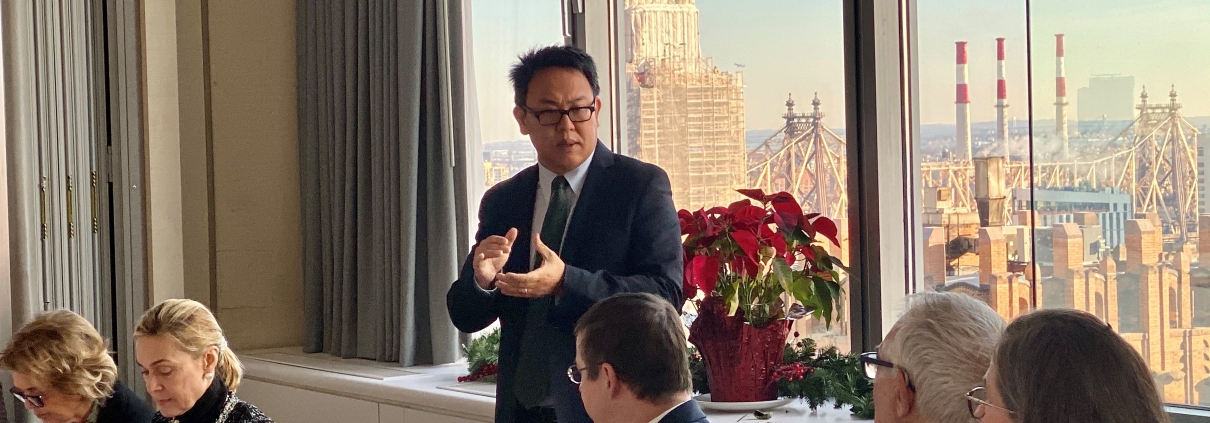X New York Global Forum
New York, United States of America
December 12, 2019
“2019, a Turbulent Year for the US and China Relationship. What can we expect from 2020?” was the title for the 2019 Christmas holiday breakfast in NYC. Mr. Rong Yang, Vice President, Head of Hematology Marketing, Bayer US LLC, shared his perspective on the current status of the US-China relationship with a focus on the trade issue. The US has since long-time chronic trade imbalance. With EU, NAFTA countries Canada and Mexico and China, the United States runs a large volume of trade deficit. Since President Trump laid his focus on solving trade issues, it is logical that he had the three trading partners in his focus, China in particular.
Tariffs have been chosen from the very beginning as a powerful tool to push China to the negotiation table although it was widely agreed that tariffs themselves were not the root causes for the trade imbalance. Since China’s entry into WTO, it significantly reduced its tariffs on US imports from 25% in 1998 to less than 6% in 2018 prior to the “trade war”. Yet the US trade deficit increased from 50 billion USD in 1998 to 420 billion USD in 2018.
The US aims to address market access, currency, intellectual property protection, State-sponsored industrial policy as well as trade dispute settlement mechanism through negotiation and wants to achieve a comprehensive deal. While China is ready to increase its purchase, increase market access and is even willing to improve domestic IP protection, it sees itself not a currency exchange rate manipulator, nor does China intend to change its industrial policy.
Increased tariffs from both sides did lead to a significant reduction of bilateral trade volume. Its short-term impact on the overall economy was felt more in China than in the US, as shown by the diverging stock market performance.
Dr. Yang predicted a high likelihood of a phase I trade deal between US and China, encompassing significant Chinese purchase of US agriculture goods; opening up of selected sectors for US investors, likely financial services and energy; commitment of no currency interference and improved intellectual property protection. A phase II agreement including significant structural reform would be challenging and unlikely in the short term.
By Dr. Rong Yang



